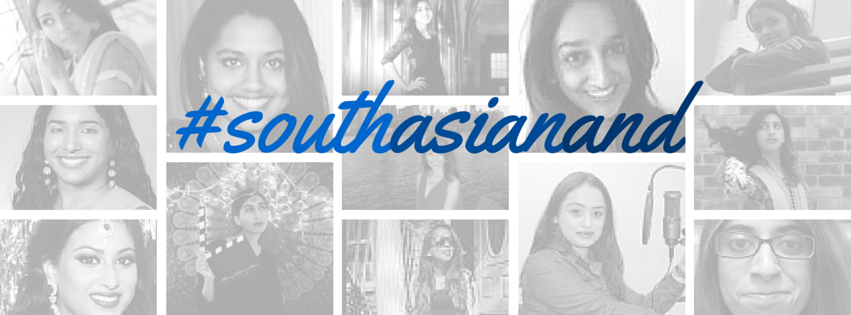
by Nur Kara
This article is part of a campaign co-sponsored with the Washington Leadership Program (WLP), called#SouthAsianAnd – a campaign to showcase the stories of South Asians in America beyond our race and the stereotypes attached to it. Share your stories by Tweeting the hashtag #SouthAsianAnd and tag @BrownGirlMag to tell us how you are South Asian and more.
“Where’s your family from?” often asked by non-South Asian colleagues, and “So you must have family in India, right?” often assumed by fellow brown-skinned friends are two questions that are actually more loaded than they seem.
My physical features and shade of mocha allude to me being from the Indian subcontinent. I can barter and banter equally in Hindi, Urdu, and Gujarati. And yes, I can most likely be found shaking my hips to Bollywood’s weekly Top 10. But I’m much more than just “Indian.” I’m much more than just “South Asian.”
To the first question, my ancestry dates back to Gujarat, India, but I’m more immediately East African.
“What?!? How is that?”
Have you ever seen The Last King of Scotland or Mississippi Masala? Well, that’s an oversimplified and complete popularization of me. Four generations of my family were born and raised in East Africa.
[Read Related: Why I am Okay With Having a Lot of Indian Friends]
Since ancient Babylon, trade has linked Gujarat and the African coast. From the 16th century onwards, many South Asians settled in East Africa as indentured servants for clerical work or semi-skilled manual labor in farming and construction. The 1860s, in particular, marked a large modern-day migration of Gujaratis to East Africa. Over 30,000 workers were taken from mainly Kutch, a district in Gujarat state and the largest district of India, to lay a railway line connecting Mombasa in Kenya to Kampala in Uganda. After the contract ended, about 7,000 Indians chose to stay back in East Africa—more so in Kenya, Mozambique, Tanzania, and Uganda—mainly for business and economic opportunity. In addition, these four countries actively ran a 450-year-old spice trade through the Indian Ocean and Gujarat’s ports of Cambay, Surat, and Mandvi.
Unfortunately, the prosperity of Indians in Uganda, mixed with racial tension among their black counterparts, soon led to their expulsion by President Idi Amin Dada in 1972. The Idi Amin government had a dream to preserve Uganda and the surrounding East African region for those of “true” and synonymously “black” African descent. Termed his “economic war,” he wished to replace the wealthy South Asian class- the Indians known in Swahili as wahindi, by displacing long established family units and distributing their ground built businesses to black civilians.
To put this into context, my family was given a 90-day ultimatum to pack up and leave shore. My mother was just 13, my father 18. Via civic accommodations, Indians immigrated to the United Kingdom and Canada, many went back home to India, and others sought asylum in neighboring Kenya. Today, however, about 10 percent of the 20,000 Asians presently in Uganda, alone, are returnees. Post-Idi Amin’s reign in 1992, then-President Yowri Kaguta Museveni formally lifted the ban on South Asians from regaining their African ethnicities, reacquiring lost property and reasserting their entrepreneurial zeal. Yet my family chose to stay in the West, finding Europe, Canada, and finally the United States as beacons for hope, investment, and higher education.
So to tie this tale together, my mother’s side is Ugandan and my father’s Tanzanian. But get this twist; my nani (maternal grandmother) is Mozambican, and therefore, due to colonial history, is also Portuguese. To the second question of whether I have family in India, the answer is simply “not anymore,” but this generally cues my confusing rant.
[Read Related: What it Means to be South Asian in the American Context]
See how the labels “Indian” or “South Asian” just don’t cut it? I am #SouthAsianAnd because, although my roots sprouted in India, I don’t have existing geographical or familial ties to India. I grew up nourished by a melee of masaaledaar Indian and East African staples. I grew up using a muddled slang of Kutchi, Gujarati, and Swahili to convey common thoughts to my South Asian friends who just usually don’t know what I’m saying. But most of all, I grew to value my mixed heritage for teaching me, through my noble, resilient, and ever-loving family, what it means to struggle, survive, and still tread on a personal and professional path that always spreads the good.
Nur Kara is a medley of Indian ancestry and East African heritage, though also carry the labels of “female,” “Ismaili Muslim,” and “first-generation American.” Being part of refugee history and having lived through these various lenses inspires her to similarly share in others’ stories. A self-coined “skeptiste,” she questions the uncommonly questioned




